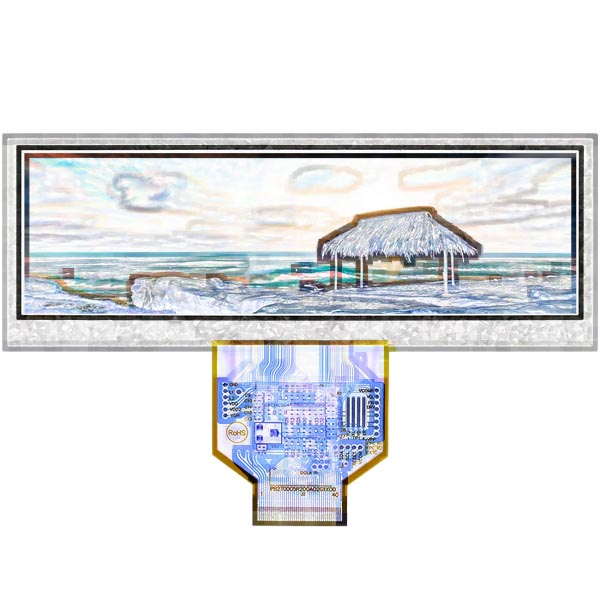What do you think happens when you see lightning with the sound of thunder in the sky? How about the sudden shock you experience while walking on a carpet or an electric jolt when you hold a doorknob? These two examples, both large-scale and small-scale events, are examples of electrostatic discharge (ESD). The shock or surprise you get is the electrostatic discharge, which is harmless to humans but can cause problems for machines and electrical devices.
But for industrial machines that are used for medical, vehicle, and factories this poses a challenging problem. Static energy is present since workspaces require clean room environments that use plastic and paper. ESD tends to slow down production, attract dirt residue, affect the product’s quality control, and worse create safety issues for the staff.
What is Electrostatic Discharge (ESD)?
Electrostatic Discharge takes place when two differently-charged objects come into contact, releasing static electricity and creating an electric shock. This contact produces the sudden flow of electric current from an electrostatic induction produced by two electrically charged objects.
Friction or triboelectric charging is the most common ESD to develop. Static energy from two items in contact depends on the closeness, separation speed, and low humidity levels. The static electricity is at rest and remains charged unless the ESD is moved far from the object. But there are other ways to produce ESD, like induction and ion bombardment.
What Factors Cause ESD?
For an ESD to occur, two differently-charged conductors are rubbed together and build up the static electricity to create a spark. ESD occurs when there is a dielectric breakdown between a positively charged object affecting a negatively charged object. The positively charged material transfers the static amount to conductive materials like styrofoam or plastic bag, creating a visible spark.
Can ESD Damage Devices?
You’ll be surprised to note that billions of dollars are recorded as losses because of ESD damage. In the electronics industry, an ESD reaction can destroy or damage sensitive electronic components. It can also alter or erase magnetic media.
Without us noticing, there are ESD events that take place during the day. Our bodies for one absorb 1,000 volts to 3,000 volts of static electricity. It takes about 2,000 volts for a person to feel ESD, but as little as 10- 30 volts for an electronic item to get damaged.
The outcome of ESD damage has visible signs such as sparks, smoking, or melting. It occurs when there is a discharge. It can also happen as latent damage, wherein an electronic device diminishes in operation or reduces its expected life. In this case, the ESD has weakened the device, affecting the expected use of the item.
Examples of Electronic Damage from ESD
ESD damage can be detected in devices with visible signs and internal breakage. It happens if the device can’t dissipate the electric charge or handle the high voltage level. If a device fails to manage the electronic levels, it is classified as an ESD-sensitive device. The most obvious ESD damage is when the metal melts in your device.
- Electromigration- high heat from the flow of electric current that moves and breaks the structure of atoms, creating vacancies of open-circuit, and deposits resulting in short-circuit.
- Splattered Aluminum- a corroded aluminum in the parts of a CPU when the coating’s thin oxide layer is affected by high heat caused by ESD
- Ruptured Passivation- degradation of a metal coating because the silicon fails to protect it from oxidation, dirt, and other compounds.
- Dielectric Failure-due to the poor conductor of electricity, the material breaks down creating a partial ionization and further reducing the properties of electrical insulation
- Contact Spiking-is a short power surge due to suddenly increased buildup or decay of a magnetic field and causes energy to flow into the device
- Oxide Failure- a device might be exposed to oxidation or contamination during the shipping and storage of electrical devices that result in galvanic corrosion.
- Junction Breakdown-the PN junction diode runs through a reverse bias that increases the voltage value and affects the reverse current of the device.
Devices that are ESD Sensitive
The common modules of a PC listed below are electronic devices or components that are ESD-sensitive. Knowing this, it is recommended that you apply easy and practical ways to protect yourself from getting your devices damaged by ESD.
- TTL- Transistor-Transistor Logic chips
- CMOS- Complementary Metal-Oxide Semiconductor chips are found in graphic cards or CPUs
- MOSFET- Metal Oxide Semiconductor field-effect transistor
- LD- Laser diodes
- LED – Blue light-emitting diodes
- High Precision resistors
How To Avoid ESD
There are ways to avoid contact with ESD. Below are some practical ways that you can apply in your home or workplace.
1. Anti – Static Wrist Strap
An anti-static wrist strap is worn on the wrist but connected to a ground source. The strap dissipates the static charge that you are carrying and prevents ESD.
2. Grounded Tools
A grounded tool is a mechanism that prevents a buildup of voltages from lightning or electrical shortage. It is a tool that is made for a low-resistance path to the earth to avoid serious injury. There are two kinds of grounded tools:
- Service or System Ground – uses a neutral wire conductor connected to a transformer or in the building entrance.
- Equipment Ground – used to protect a person from malfunctions by directing the electrical charge to the ground during contact with a metal frame or tool
3. Avoid Friction
Easier said than done, but when working with electric components, limit movement within the workspace. To decrease the risk of ESD, try to lessen friction or contact with other items and choose your working environment. An option is to separate your workspace into different areas, so you create gaps in between your movements.
4. Avoid Synthetic Clothing
When you wear man-made fabrics made from chemicals like oil, natural gas, or coal, it goes through a process of extensive synthesis called polymerization to become wearable fabric. Materials made of polyester, spandex, rayon, nylon, acrylic, microfiber, neoprene, acetate, polyvinyl chloride, and synthetic fur or leather are better avoided because it generates static electricity that increases ESD reaction.
5. Avoid Non-ESD Carpet Flooring
Just like wearing synthetic clothing, floor carpets can generate static electricity that increases ESD. A regular carpet will absorb the static electricity and transfer the charge. But an ESD carpet that has electrical resistance resists the flow of electricity. An ESD floor is anti-static, regardless of the kind of shoes people are wearing. Another option is to work on hard surface floors that are closer to the ground and lessens any static contact.
How To Protect ESD Reaction to Devices
It’s been discussed that ESD can affect electronic devices and appliances. The next thing to do is find practical ways to protect these. One way is to use conductive thermoplastic compounds, wherein ESD can be controlled for a high-level electronic charge or dissipate to dangerous levels. Other simpler and easier ways are listed below:
1. Anti-Static Mats
An anti-static mat or ground mat is used under keyboards or other types of equipment. It contains a conductive material that absorbs or accumulates static. This is done by collecting electricity through a plug that makes the mat grounded or earthed. However, once a mat is grounded or electrically charged, remember not to lift or separate the component or part that is on top of the mat because it will affect the other devices.
2. Anti-Static Bags
Made from a packaging material of polyethylene terephthalate, it prevents static electricity from touching sensitive components. It has different sizes with a distinct silver color and a semi-reflective surface to store and safely transfer ESD-sensitive equipment. Usually, this is used when you buy a new hardware device like a video card, a sound card, or a hard drive.
3. Humidity-Control
Humidity is one thing that must be maintained at 40%-70% EPA area. High humidity increases the moisture in the air and helps dissipate static charges. In a dry environment, you can use a humidifier to increase humidity.
4. Manufacturing and Assembly in the Factory Site
Manufacturers, as well as Distributors, must have an ESD Protected Area (EPA) that includes all surfaces, tools, devices, and even the staff that is static-free. This means that elements are grounded and maintained at the same electrical potential to avoid surges. Strict quality control must be observed:
- Identify EPA boundaries with proper signs, labels, and sectionals
- Have available anti-ESD equipment such as anti-static mats, waistbands, gloves, etc.
- Set up anti-static work surfaces
- Provide grounding methods that dissipate static reactions
- Control humidity levels
Final Notes
When buying any electronic device, you should take note of how the supplier packs the device. In the factory site of DisplayMan, your fear of ESD damage is put to rest. As a veteran supplier, you are assured of strict adherence to EPA-site manufacturing areas. The company’s ISO9001 certification ensures strict quality control. You can consult with the in-house experts who can recommend the needed safety measures to protect against ESD damage.
By taking the necessary steps to protect your electronic devices, you don’t have to worry about malfunctions or shorter lifespans. You can set up a simple EPA- environment, with less humidity and anti-static mats on the floor surface. Remember to wear anti-static clothing and if needed gloves to lessen the chance of any ESD reaction with your whole set-up.






